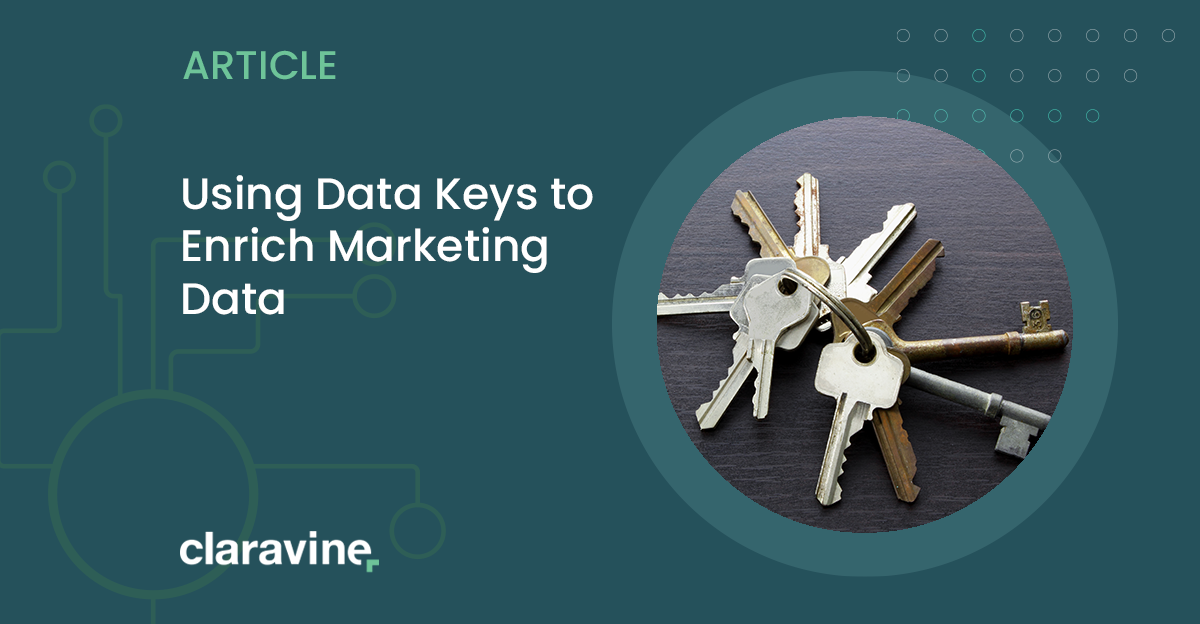The key to fast, valuable insights? Your own data keys.

Over the last few years, digital marketers have faced steady change. From a cookieless future, to a changing privacy and regulatory landscape, and increased customer scrutiny of data collection policies, the digital landscape continues to shift.
While there are many benefits to these changes for consumers and brands, it fundamentally changes the way marketers approach measurement and attribution. And it has everyone looking more closely at the data they collect and the value it delivers to their business. In addition to “owning” more data, building partnerships, and investing in tech like CDPs and clean rooms, brands and agencies are focused on collecting compliant, business-relevant data points to give their marketing strategy an edge in measurement.
To-date, most organizations took the approach of collecting any and every data point along the way. You could then use device ID matching and ETL to aggregate 1P and 3P data points and build reports based on observation of individuals’ activities across campaigns and channels. This wasn’t always simple, but there were a lot of identity-based data points available to stitch and cleanse. Many organizations were comfortable with the margin of error involved given the tremendous volume of data being used. Even if there were concerns this was the way everyone did it and was generally accepted.
A different way of thinking about “IDs”
But with many of the tried and true identity-based mechanisms for measurement and attribution decreasing in availability, organizations have to take a new approach to their data – putting more effort into how data is set-up from the start to enable experimentation later. Otherwise, even if they collect the right data from the right places, that data can’t be put to use quickly enough to return business value and their treasure trove of data quickly becomes junk.
This doesn’t mean IDs don’t have value in the future of measurement and attribution. But it is important that organizations start to think about ID management differently – focusing on various types of identifiers instead of only identity or device-based IDs. With this shift, organizations control their own ID strategy across campaign and content workflows so they can quickly identify and connect different datasets together to make decisions.
This means defining and implementing an enterprise data model that includes common standards, and keys/IDs that work for YOUR data, teams and business. And this is why at Claravine, we believe that creating, managing and connecting IDs across your campaign metadata is the literal key to unlocking modern marketing’s potential. Because with more data than ever coming from more sources, you need shared data points that help you identify and tie datasets together.
This may sound complicated, but once you have a solution – in Claravine’s case, our platform The Data Standards Cloud® – to generate and manage your keys (aka IDs) across datasets and the teams creating them, it’s actually quite simple. Want to see this in action? Explore our interactive demo.
What a key/ID can look like
A key or ID can be made up of numbers, letters, symbols, or all of the above. It can be generated as a one-time code, or built from a shortened version of another field of data. It can be something your organization generates, or an ID generated in one of your other solutions that you want to maintain across the various datasets your team is generating.
What matters is that the ID provides a unique key for your team to use to create relationships between the different datasets you want to connect – ensuring that the campaign metadata you create and capture can be easily linked back together in your analytics and BI tools. It’s relational database 101, to be honest.
Some common examples:
|
|
|
Replace cumbersome workarounds with keys you control
While this may initially sound like another thing your team has to manage, when we talk to organizations we find they are already doing some form of ID management, just not very effectively or efficiently. For example, using a naming convention where they are trying to cram a ton of details together to be parsed apart later by analytics.
You may decide to still use a naming convention as one of your IDs, but you no longer have to put everything in that single value. Instead, capture unlimited metadata attributes tied to your simplified naming convention or other ID(s) of choice that can be easily read by your analytics team. Rid yourself of that nightmare of a concatenation and create more context for the campaigns and content you measure!
To see what we mean, take a look at how a common ID – in this case a campaign ID – can be tied to unique sets of data that your team is generating at various stages of the campaign creation process. Now, with a unique ID in place at each step, you can use this one piece of data as a “key” to create a singular data picture as your extract insights.

The result? Faster, deeper insights.
Not only do IDs help you quickly link together your metadata, but you can use these IDs to tie your dimensional data like metadata to other types of data you collect (e.g., customer, cost, performance data) creating important context for filtering and segmentation.
All that you need to do is have the key or ID persist to make those connections across different datasets and voila!

Sounds great! What’s next?
A new approach to ID management is just one of the keys (no pun intended) to marketing success. Go deeper on how to apply data standards to all the data connected to your IDs, providing your team with even more consistency and speed to insight.



